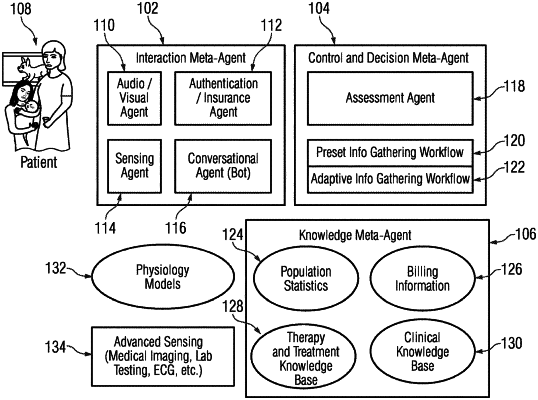| CPC G16H 50/20 (2018.01) [A61B 5/7267 (2013.01); G06F 16/258 (2019.01); G06N 3/045 (2023.01); G06N 3/08 (2013.01); G16H 10/20 (2018.01); G16H 10/60 (2018.01); G16H 15/00 (2018.01); G16H 50/30 (2018.01); G16H 40/20 (2018.01)] | 17 Claims |

|
1. A method for automatically determining an assessment of a patient, comprising:
automatically interacting with a patient, by a first trained machine learning based model guided by a second trained machine learning based model, to acquire initial patient data;
automatically retrieving, by a third trained machine learning based model guided by the second trained machine learning based model, health related information from one or more databases;
automatically determining one or more risk factors associated with the patient, by the second trained machine learning based model, based on the acquired initial patient data and the retrieved health related information;
presenting a consolidated information view of the one or more risk factors to the patient via a display device;
automatically interacting with the patient, by the first trained machine learning based model guided by the second trained machine learning based model, using the presented consolidated information view to acquire additional patient data based on 1) the one or more determined risk factors and 2) data required by one or more physiology models of the patient for simulating one or more clinical scenarios;
updating the presented consolidated information view of the one or more risk factors based on the additional patient data as the additional patient data is acquired;
automatically determining the assessment of the patient, by the second trained machine learning based model, based on the initial patient data and the additional patient data using the one or more physiology models simulating the one or more clinical scenarios; and
displaying the assessment of the patient on the display device.
|